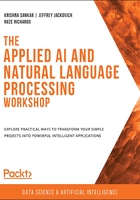
Introduction
We are in an era of unprecedented computing capabilities—serverless computing with autonomous functions that can scale elastically from zero to a million users and back to zero in seconds, innovative intelligent bot frameworks that can live in a contact center in the cloud that we can spin up with a small amount of configuration, and the ability to extract text from images, tables, and scanned documents such as medical records and business and tax documents.
Of course, we are talking about the cloud services available at our fingertips, specifically from Amazon. In 2004, Amazon first offered cloud computing as a service, and now (according to Forbes) the cloud market is worth over $30 billion, growing at a rate of 30-50% yearly. More and more people prefer to do their computing in the cloud.
So, what is cloud computing? It is a set of computing services of which you can use as much as you need and can afford and pay for on an as-you-go basis. So, enterprises switch from their own hosting to the cloud. Beyond that, you get not only a cost-efficient way of doing your computing, but you also get a wider and wider variety of these services.
While there is a huge set of cloud services offered by Amazon, in this book, we will work with Amazon Web Services (AWS) for Artificial Intelligence (AI) and Machine Learning (ML). In the process, we will also use AWS Lambda for serverless computing, AWS Simple Storage Service, and AWS API Gateway for networking and content delivery.
This chapter will introduce you to the AWS interface and will teach you how to store and retrieve data with Amazon Simple Storage Service (S3). Then, you will apply your S3 knowledge by importing and exporting text data via the management console and the CLI. Lastly, you will learn how to locate and test AI and ML services.
In later chapters, you will get a chance to apply Natural Language Processing (NLP) techniques to analyze documents, program serverless computing, use AI/ML services for topic and theme extraction, construct your own fully capable contact center with its own telephone number, develop bots that answer calls in your own contact center, and finally, program image analysis with ML to extract text from images (such as street signs) and perform facial recognition. Overall, it is going to be an interesting journey that will end with us commanding an infrastructure of vast resources for AI and ML.